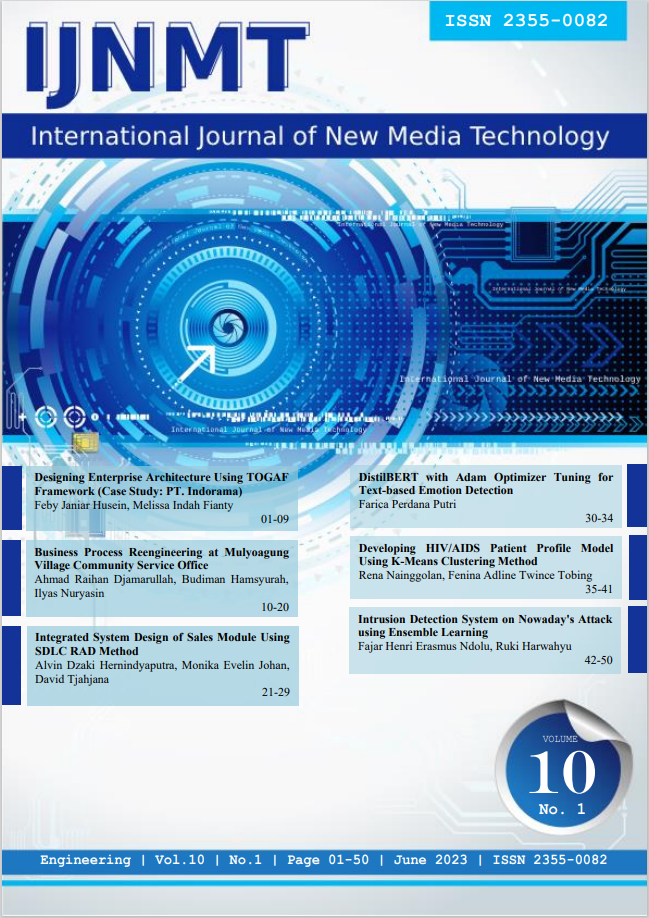The Integrated System Design Of Sales And Production Module Using RAD Method
English
DOI:
https://doi.org/10.31937/ijnmt.v10i1.3012Abstract
PT Shafira Putri Kreatif is a company engaged in the field of fashion and apparel for men and women. In business processes, communication is carried out manually in the form of face-to-face or in-office meetings between subsidiaries. This results in inappropriate or forgotten information on production and sales. Therefore, implementing the ERP module is because it can help find important problem points faced by companies to better control the company's financial performance. The SDLC Rapid Application Development (RAD) method was used. System design is done by making DFD and ERD. The system design is coded using the PHP programming language with the Laravel framework and SQL database. The result of the research is a website-based application that is integrated with the sales module which can assist in viewing and managing transaction data from subsidiaries.
Downloads
Additional Files
Published
How to Cite
Issue
Section
License
Authors retain copyright and grant the journal right of first publication with the work simultaneously licensed under a Creative Commons Attribution-ShareAlike International License (CC-BY-SA 4.0) that allows others to share the work with an acknowledgement of the work's authorship and initial publication in this journal.
Authors are able to enter into separate, additional contractual arrangements for the non-exclusive distribution of the journal's published version of the work (e.g., post it to an institutional repository or publish it in a book), with an acknowledgement of its initial publication in this journal.
Copyright without Restrictions
The journal allows the author(s) to hold the copyright without restrictions and will retain publishing rights without restrictions.
The submitted papers are assumed to contain no proprietary material unprotected by patent or patent application; responsibility for technical content and for protection of proprietary material rests solely with the author(s) and their organizations and is not the responsibility of the IJNMT or its Editorial Staff. The main (first/corresponding) author is responsible for ensuring that the article has been seen and approved by all the other authors. It is the responsibility of the author to obtain all necessary copyright release permissions for the use of any copyrighted materials in the manuscript prior to the submission.















